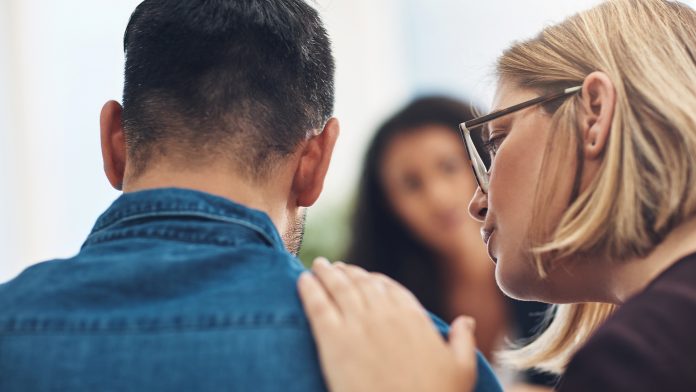
Lighting up to extinguish the crisis of opioid use? Discover the emerging research for cannabis use as a harm reduction strategy in North America.
The opioid overdose crisis is among one of the most significant public health challenges we are facing today in North America. With over 70,327 lives lost in the United States and 3,987 in Canada in 2017, the number of deaths continue to increase from year to year with little sign of slowing. Canadian and US policy makers, people who use drugs, health professionals, and cannabis activists are increasingly suggesting that cannabis may be an effective tool for alleviating the overdose crisis. This subject has been the focus of a growing number of articles published in academic journals, which have become the subject of much debate.
Not everyone agrees that cannabis is or should be considered a solution to the crisis. Sceptics argue that the scientific evidence for the therapeutic benefits of cannabis in the treatment of chronic pain is weak, and that the risk of problematic opioid use is higher among populations using cannabis, making cannabis a ‘companion drug rather than substitution drug.’
However, this resistance to exploring cannabis use as a therapeutic tool is not merely a question of scientific evidence and debate, seeing as cannabis has a fraught political and ideological history that has made it a maligned and stigmatised substance.
Cannabis prohibition, after all, has been used as a racist tactic of immigration and population control against Black and Hispanic communities, and in the 1980s, when cannabis was classified as a Schedule I drug in the United States Controlled Substance Act (1970), a government-led ‘war on drugs’ ensued that deepened racial inequalities for Black communities in Canada and the US, which experienced intensified policing and mass incarceration that left many to suffer violence and the attendant social consequences of being a criminalised population.
As a result of the war on drugs, research suggesting that cannabis is a ‘gateway drug’ to harder substance use has figured prominently in public and academic discourse and has operated as a warning to the public – and especially youth – on the dangers of cannabis use. A significant body of research has since continued to highlight the dangers of cannabis to public health.
The fact that we are now discussing cannabis as a possible treatment and harm reduction strategy in Canada and the US, two countries which now have some legal provisions in place for medical and recreational cannabis, signals that there has been an ideological shift in public attitudes towards cannabis use. It is measurable progress that a drug that was once considered a gateway to harder substances might now be viewed as an emergency exit from a deadly public health crisis.
Last year, CMHA released a policy paper entitled Care not Corrections: Relieving the Opioid Crisis in Canada, which offered evidence-informed recommendations directed at federal and provincial/territorial governments to curb the escalating opioid crisis. One of our recommendations called to “explore promising new research on cannabis as an alternative form of treatment to substitute opioids for pain management, to manage withdrawal symptoms, and/or treat substance use problems.” This recommendation not only comes from early evidence that suggests that cannabis may be effective in reducing opioid use and in managing withdrawal symptoms; it also stems from the recognition that unprecedented public health crises require innovative and ‘out of the box’ solutions.
We don’t have to look far back into the history of the opioid crisis to know that experimental research and programs can provide a critical stepping stone for policy change in instances where public policy is failing and yet stubbornly resists change. In the 1990s, during the height of the heroin and HIV crisis in Switzerland, the Swiss government created a legal framework that gave licence to researchers to conduct experimental studies providing medical grade heroin as a form of addictions treatment to people who injected drugs who were at risk of HIV infection and overdose from illegally produced heroin.
At the time, these experimental programs contravened UN drug conventions and elicited strong criticism from international bodies such as the International Narcotics Control Board. Yet, the positive evidence obtained from the studies – namely, through improved health outcomes and the reduced risk of overdose and death – changed the fabric of Swiss drug policy so that political decision-making was informed not by ideology but by empirical evidence.
In the spirit of searching for innovative and evidence informed solutions to the opioid crisis, this article explores the evidence that suggests that cannabis use may be an effective tool in curbing the opioid crisis. We suggest that while more robust evidence is needed, this preliminary research shows some promise.
Opioid overdoses, analgesia, and the crisis of suffering
Opioids are powerful drugs that are used to treat pain. While many health professionals are pointing to the over prescription of opioids for physical pain as the source of the current opioid crisis, this emphasis often overlooks how opioids are used to treat other forms of pain, including psychological suffering and mental illness, which can also intersect with physical pain.
This suffering is not merely a function of genetics or biology; it is also linked to environmental factors such as marginalisation, trauma, social inequality and poor access to health care. It is well known that people’s experiences of health are shaped by systemic inequalities and advantages linked to race, class, gender, sexual orientation, education, age, ability, citizenship status, and housing, among others.
For people who experience stressors related to everyday survival, who are faced with violence or who present with untreated mental illness and addictions, opioids may be used to cope with or numb psychological pain, trauma and suffering.
Opioids operate by binding to opioid receptors, known as mu receptors, in the brain, spinal cord and other tissues of the human body where they trigger the flow of endorphins – the body’s ‘natural’ opioids. When they attach to opioid receptors, they alter the perception of pain by stimulating dopamine release, which, in high doses, can also engender a sense of euphoria. Over time, the analgesic effect of opioids diminishes, and tolerance builds up, which requires higher doses to achieve pain relief and can result in dependence or addiction. The danger of opioids, in addition to the risk of problematic use, is their potential for producing an overdose. Opioids are central nervous system depressants and when taken in a quantity that exceeds what the body can handle, they can depress breathing and precipitate heart failure.
Cannabis is also an analgesic. When tetrahydrocannabinol (THC), a primary active ingredient in cannabis, enters the body, it activates the CB1 cannabinoid receptors found throughout the nervous system and the CB2 cannabinoid receptors located primarily in the immune system, in areas such as the spleen and tonsils. The activation of these receptors engenders pain relief, muscle relaxation, and can produce a psychoactive response. Although cannabis is like any other substance in that it can be used problematically, overconsumed, and can lead to dependence, unlike opioids, high doses of THC are not lethal.
When cannabis is used in conjunction with opioids, an ‘opioid sparing effect’ can occur in which pain relief can effectively be achieved at lower opioid doses. Research suggests that this happens because there is a synergy in the analgesic effects between opioids and cannabinoids, given that CB1 cannabinoid receptors and opioid mu receptors are located in the same pain-signalling regions of the spinal cord and brain (Fig. 1). As the opioid crisis continues to worsen, the evidence that cannabis can have an opioid-sparing effect has made some researchers hopeful that cannabis may temper opioid use by reducing the quantities consumed and lowering the rates of physical dependence.
Although it is very much an emerging area of research, there is some evidence to support the cannabis-opioid-sparing hypothesis. Some of the population-level research on states with medical cannabis (MC) and recreational cannabis (RC) laws, for instance, has linked the presence of laws to decreases in opioid prescribing and harms. In a recent study that explored MC laws in states with operational dispensaries, the reduction in overdoses was found to be as high as 25% and a 38% reduction in treatment admissions was reported for heroin and other opioids.
Other studies have also reported reductions in opioid prescribing and hospitalisation for overdoses in states with MC and RC laws. An important limitation of this research, however, is that this state-level data presents ‘the weakest type of evidence for causal inferences,’ given that population level analyses cannot establish a causal connection between MC and RC laws themselves and the rates of opioid prescribing and harms because they are unable to chart individual patterns of substance use and substitution.
However, there are studies that have been conducted with patients enrolled in dispensaries and medical cannabis programs in Canada and the US that track individual use and substitution patterns. Importantly, they confirm that patients with chronic pain (whether physical, psychological, or both) value cannabis as a useful medication for pain relief and see cannabis as an important adjunct therapy. Of the patients who reported substituting cannabis for prescription drugs, one study found that 32% did so for opioids and were more likely to report using cannabis to manage pain, and another study reports that among medical cannabis patients who also used opioids, 76.7% reduced their use.
In another study, a small population of chronic pain patients in Michigan reported reductions in opioid use by 64%, as well as decreased medication side effects and an improved quality of life. These results, however, must be approached with caution because they are based in self-report and represent a population that has a favourable view of cannabis. These studies challenge earlier findings that suggest that cannabis is not an effective therapy for pain management and that link cannabis use to a greater likelihood of using prescription opioids.
The opioid-sparing effects of cannabis have also been studied in populations seeking treatment for problematic opioid use. Among people who use illegally obtained opioids, CBD has been found to reduce cravings and levels of anxiety among people who use heroin, and cannabis has been shown to have an association with lower severity of withdrawal in treatment with methadone. The evidence, however, on whether cannabis use can improve treatment retention for people receiving buprenorphine and methadone for opioid use disorder is conflicting; although there are several studies that suggest that cannabis use does not influence treatment retention, a recent Canadian study with a cohort receiving treatment for problematic use of illegal drugs found that those who consumed cannabis daily were 21% more likely to stay in treatment after six months compared to those who did not use cannabis.
An area that remains underexplored is how cannabis is utilised by people who use drugs in harm reduction settings. Recognising that some of the most significant impacts of the overdose crisis are felt in communities that inject drugs and access harm reduction services, we decided to conduct a small cross-sectional study of the rates of substitution of cannabis for other drugs at a harm reduction site run by High Hopes Foundation, a not-for-profit organisation located in the Downtown Eastside (DTES) of Vancouver, BC.
Founded by Sarah Blyth, President of the Overdose Prevention Society, High Hopes offers cannabis products, which include bud, edibles, capsules, CBD, kratom, and cannabis-infused honey as an alternative to opioids for pain management and as a measure to stem the tide of fentanyl overdoses in the DTES, the epicentre of the opioid crisis in Canada.
The survey was administered in hard copy over a 2 day period in January 2019 and reached a total number of 45 visitors who were asked about their consumption of cannabis and other drugs before and after visiting High Hopes. This survey focused on three primary themes: whether visitors to the site had any medical diagnoses (including mental illness and substance use problems), whether they have experienced an overdose, and whether enhanced access to cannabis had reduced their consumption of other drugs.
In this small sample (n=45), 78% of respondents identified as having at least one mental illness, with the highest number reporting depression (54%), anxiety (49%) and PTSD (49%). 65% of respondents reported that they experienced an overdose and 82% indicated that they were visiting High Hopes to taper off opioids. The median age of the participants was 39 years, and most were male (72%) and White (63%), with 23% of visitors identified as Indigenous.
When asked if cannabis helped reduce their use of any other substance, the respondents indicated that opioids were the class of drugs for which they were more likely to reduce consumption: 70% of the population using opioids indicated that they were able to reduce the amount they consumed, followed by 64% and 63% of the population using methamphetamines and cocaine, respectively.
Opioids were also the drug class used with the highest frequency, as a higher number of individuals reported consuming opioids two or more times a day prior to visiting High Hopes. Of the population that indicated that they reduced their opioid consumption after visiting High Hopes, 15% reported that they ceased use completely, and 21% noted that they reduced consumption by 6-9 fewer times each week.
While there are limitations to this study – namely, the small sample size, the short period over which data was collected, the problems with self-report and the possibility of recall bias – this preliminary research nevertheless offers some important insights about the potential role of cannabis in reducing opioid harms among a vulnerable population. While we are unable to draw causal explanations for opioid substitution or definite conclusions about the benefits of cannabis in reducing opioid harms, what we did learn from this preliminary study was that cannabis was viewed as an important adjunct therapy by a population that experiences higher rates of mental illness, trauma, physical comorbidities, and overdose.
More in-depth research is needed to accurately measure dose reductions, improvements in symptoms and pain, and to establish the underlying reasons visitors to High Hopes use cannabis as a substitute for opioids.
Parity for mental health and the opioid crisis
As we argued in the introduction, extinguishing the opioid crisis requires out of the box thinking, and the early evidence suggests that cannabis may be an effective tool for managing chronic pain, problematic opioid use, and mental illness, and even possibly an important harm reduction strategy for those most at risk of overdose.
While greater quality research is needed to gain a better understanding of the possible benefits of cannabis in improving pain management and mitigating opioid harms, we anticipate that the loosened legal restrictions for research that have accompanied the legalisation of cannabis in Canada will open the door for generating empirical evidence.
Cannabis alone, however, will not address the underlying problems of the crisis in which we currently find ourselves.
In addition to exploring the benefits of alternative therapies such as cannabis, we must also address the contamination of the drug supply. Recently, many progressive organisations have been calling for programs that supply pharmaceutical-grade opioids to people at higher risk for overdose from fentanyl and fentanyl analogues. The government of Canada has responded to these calls by approving injectable hydromorphone as a treatment modality for people with opioid use disorder. While this is an excellent first step to ensuring that people who have an opioid use disorder have a safe supply of medication, there is still much work to be done to ensure that a safe supply – along with mental health and treatment supports – are available to all individuals at risk of the harms of fentanyl and its analogues.
Finally, to adequately tackle a public health problem that is rooted in physical and psychological suffering, we must also address the underlying drivers of pain: namely, social inequality, dwindling social supports, inadequate health care and the lack of access to mental health and addictions services.
Last year, CMHA called for the government of Canada to introduce legislation for mental health parity so that mental health and addictions services and supports are no longer relegated to the peripheries of our healthcare system. As outlined in our policy paper, Mental Health in the Balance, a more holistic approach to promoting health and mental wellness requires that mental health and addictions services be publicly funded, that we make sustainable investments in the social services that improve health outcomes, and that services be better integrated within our healthcare system and co-ordinated across sectors.
With investments in social services and mental health and an openness to experimenting with out of the box solutions, we will be better equipped to get ahead of this public health crisis.
References
- Beaufort, K. (2015). Interactions of the Opioid and Cannabinoid Systems in Reward: Insights from Knockout Studies. Frontiers in Pharmacology. https://doi.org/10.3389/fphar.2015.00006.
- Lake, S., and Milloy, M.J. (2018) Access to Medical Cannabis is Expanding Across North America Regardless of the Opioid Crisis: Why not Study if it could Help? Addiction 113; Rogeberg et al. (2018) Cannabis and Opioid Overdoses: Time to Move on and Examine Potential Mechanisms. Addiction 113.
- Finn, K. (2018) Why Marijuana will not Fix the Opioid Epidemic. Missouri Medicine. 115.3.
- Rolles, S. (2016) From Drug War to Policy Reform: Implications of US Drug Strategy for Latin America. In Drug Policies and the Politics of Drugs in the Americas. Edited by Labate et al. Switzerland: Springer; Khenti, A. (2014) The Canadian War on Drugs: Structural Violence and unequal Treatment of Black Canadians. International Journal of Drug Policy 25.
- CMHA. (2018) Care Not Corrections: Relieving the Opioid Crisis in Canada. Toronto, ON: CMHA.
- Csete, J. (2010) From the Mountaintops: What the World Can Learn from Drug Policy Change in Switzerland. New York, NY: Open Society Foundations.
- Ballantyne and LaForge. (2007) Opioid Dependence and Addiction during Opioid Treatment of Chronic Pain. Pain 129: Mistry et al. Genetics of Opioid Dependence (2014) Current Psychiatry Reviews 10
- Khan et al. Perspectives on Cannabis as a Substitute for Opioid Analgesics. Pain Management.
- Wiese and Wilson-Poe. (2018) Emerging Evidence for Cannabis Role in Opioid Use Disorder. Cannabis and Cannabinoid Research 3.1.
- Powell et al. (2018) Do Medical Marijuana Laws Reduce Addictions and Deaths Related to Pain Killers? Journal of Health Economics 58.
- Wen and Hockenberry. (2018) Association of Medical and Adult-use Marijuana Laws with Opioid Prescribing for Medicaid Enrollees. JAMA Internal Medicine.
- Campbell et al. (2018) What does the Ecological and Epidemiological Evidence Indicate about the Potential for Cannabinoids to Reduce Opioid Use and Harms? A Comprehensive Review. International Review of Psychiatry.
- Lucas and Walsh (2017) Medical Cannabis Access, Use, and Substitution for Prescription Opioids and Other Substances: A survey of Authorized Medical Cannabis Patients. International Journal of Drug Policy 42; Piper et al. (2017) Substitution of Medical Cannabis for Pharmaceutical Agents for Pain, Anxiety, and Sleep. Journal of Psychopharmacology 31.5.
- Boehnke et al. (2016) Medical Cannabis Use Is Associated with Decreased Opiate Medication Use in a Retrospective Cross-Sectional Survey of Patients with Chronic Pain. The Journal of Pain 17.6.
- Hamilton et al. (2017) Therapeutic Use of Cannabis: Prevalence and Characteristics among Adults in Ontario, Canada. Canadian Journal of Public Health 108.3.
- Hurd et al. (2015) Early Phase in the Development of Cannabidiol as a Treatment for Addiction: Opioid Relapse Takes Initial Center Stage. Neurotherapeutics 12.
- Socías et al. (2018). High-intensity Cannabis Use is Associated with Retention in Opioid Agonist Treatment: A Longitudinal Analysis. Addiction.
- CMHA. (2018) Mental Health in the Balance: Ending the Health Care Disparity in Canada. Toronto, ON: CMHA.
We would like to acknowledge and thank Sarah Blyth for partnering with us on this project and to thank the clients of High Hopes who shared their experiences with us.
Leyna Lowe, Ph.D.,
National Policy & Research Analyst
Fardous Hosseiny, M.Sc.
National Director, Research &
Public Policy
Canadian Mental
Health Association
+1 (416) 646 5557
info@cmha.ca
Tweet @CMHA_NTL
https://cmha.ca/
Please note, this article will appear in issue 10 of Health Europa Quarterly, which will be available to read in July 2019.









